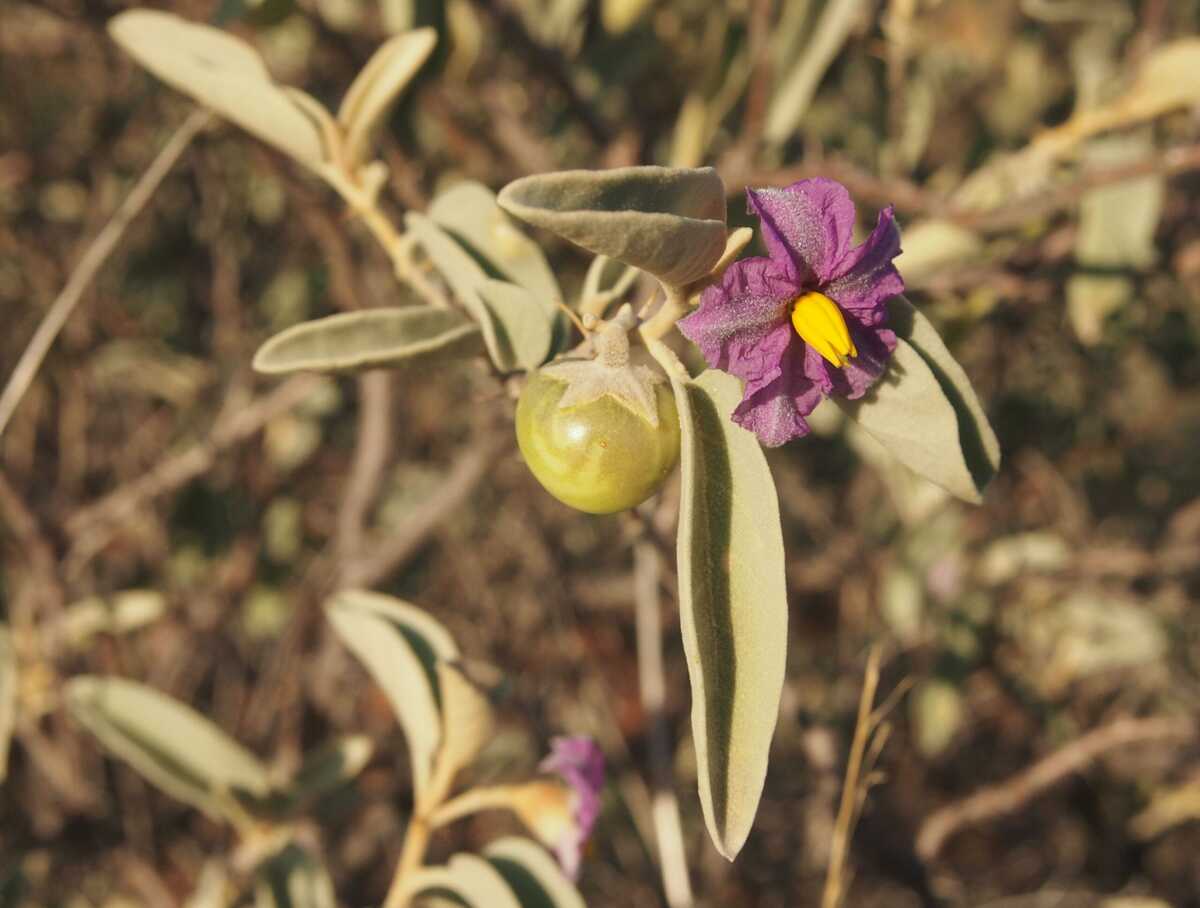{{{description}}}
Aboriginal people have been utilizing the plants of Central Australia for tens of thousands of years, making medicine, clothing, weapons and food out of them. Time your journey right, and you'll be able to see heaps of colours. Flower enthusiasts tend to prefer spring for a more fulfilling experience.
This species (Acacia spondylophylla) gets its name from its leaves' distinct curry-like scent. It flowers in winter and can be seen in the Northern Territory. Learn more at https://en.wikipedia.org/wiki/Acacia_spondylophylla
Photo by Mark Marathon (CC BY-SA 4.0)

A small shrub that has pink/purple flowers and many hairy branches, this species (Eremophila macdonnellii) usually flowers in all seasons but autumn. Although this species is named Eremophila macdonnellii (as in Macdonnell Ranges) it can be seen all around Central Australia. Learn more at https://en.wikipedia.org/wiki/Eremophila_macdonnellii
Photo by Mark Marathon (CC BY-SA 4.0)
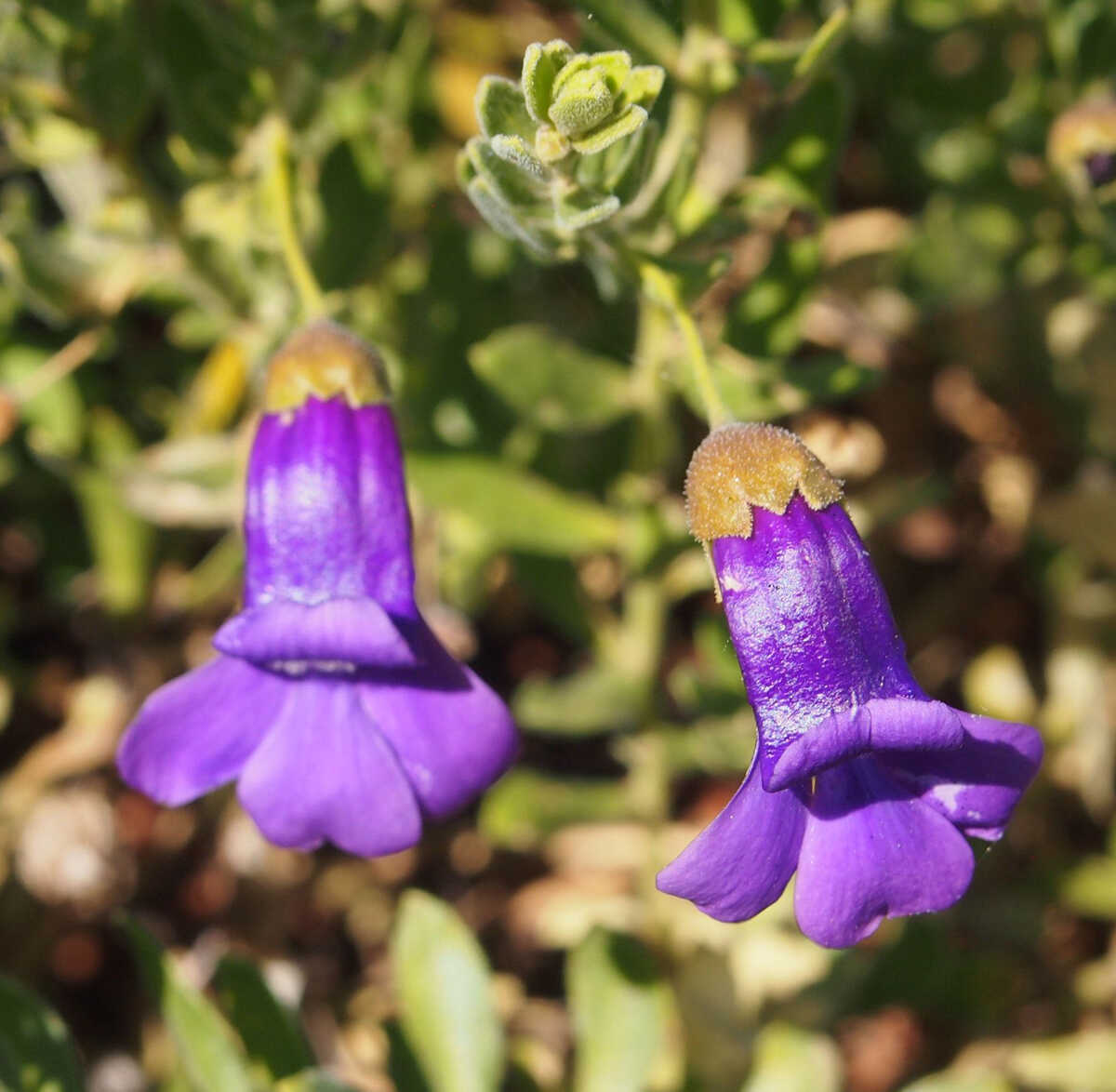
An iconic flower that's known for its blood-red flowers with a black centre (boss), this species (Swainsona formosa) grows anywhere but the state of Victoria. Its name comes from English botanist Isaac Swainson. Learn more at https://en.wikipedia.org/wiki/Swainsona_formosa
Photo by Chesna (Simplified Pixabay License)

Flowering around late winter, this species (Gossypium sturtianum) is considered an icon for the Northern Territory flora. Its petals are generally pink to purple with a red centre. It is also known as Darling River Rose, Australian Cotton and Cotton Rosebush. The round leaves of the plant have a strong scent when crushed. Learn more at https://en.wikipedia.org/wiki/Gossypium_sturtianum
Photo by Mark Marathon (CC BY-SA 4.0)
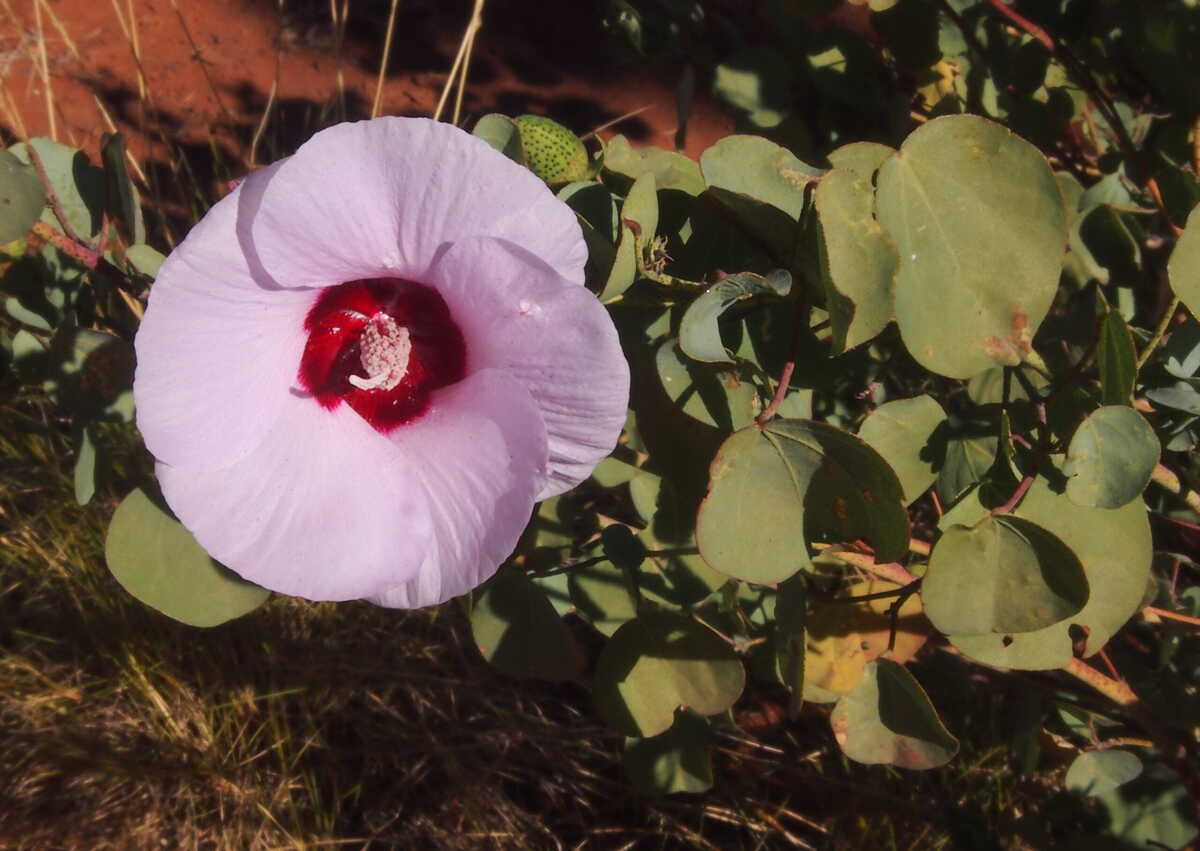
You can usually see this species (Ptilotus exaltatus) on rocky slopes, sand dunes and stony plains. It's generally around a metre long, but if fed well it can reach up to 1.5 metres. Learn more at https://en.wikipedia.org/wiki/Ptilotus_exaltatus
Photo by d3j4vu (GNU Free Documentation License)
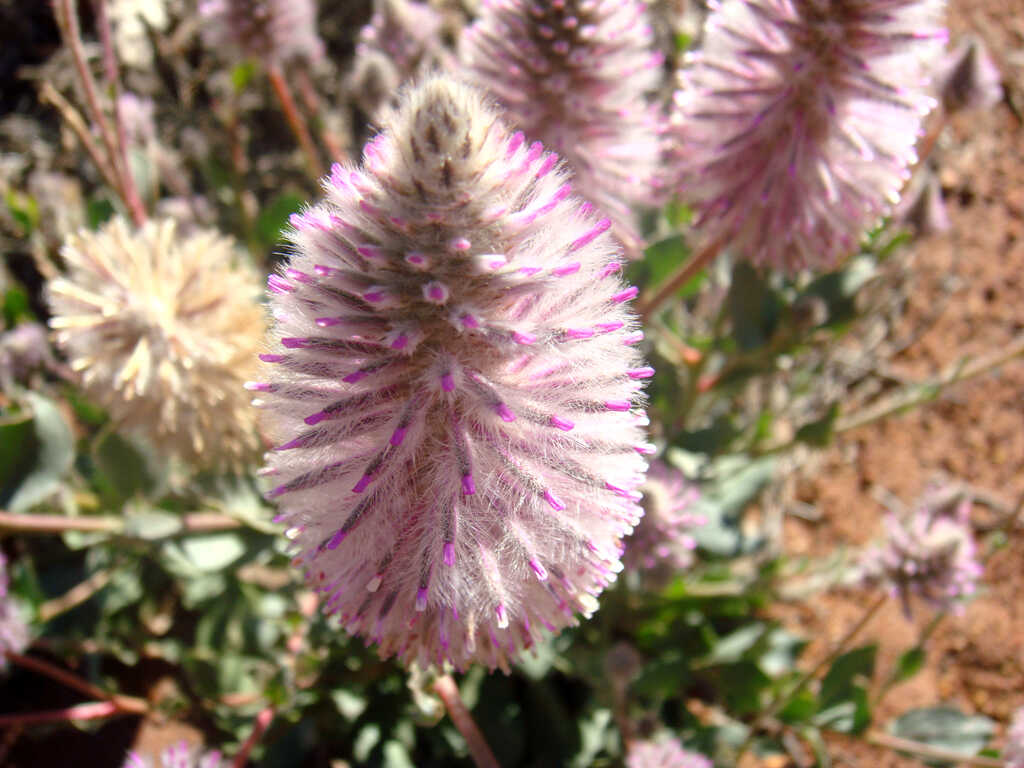
As known as Common White Sunray or White Everlasting, this species (Coronidium elatum) usually grows in spring and varies in size. Learn more at https://en.wikipedia.org/wiki/Coronidium_elatum
Photo by John Tann (CC BY 2.0)
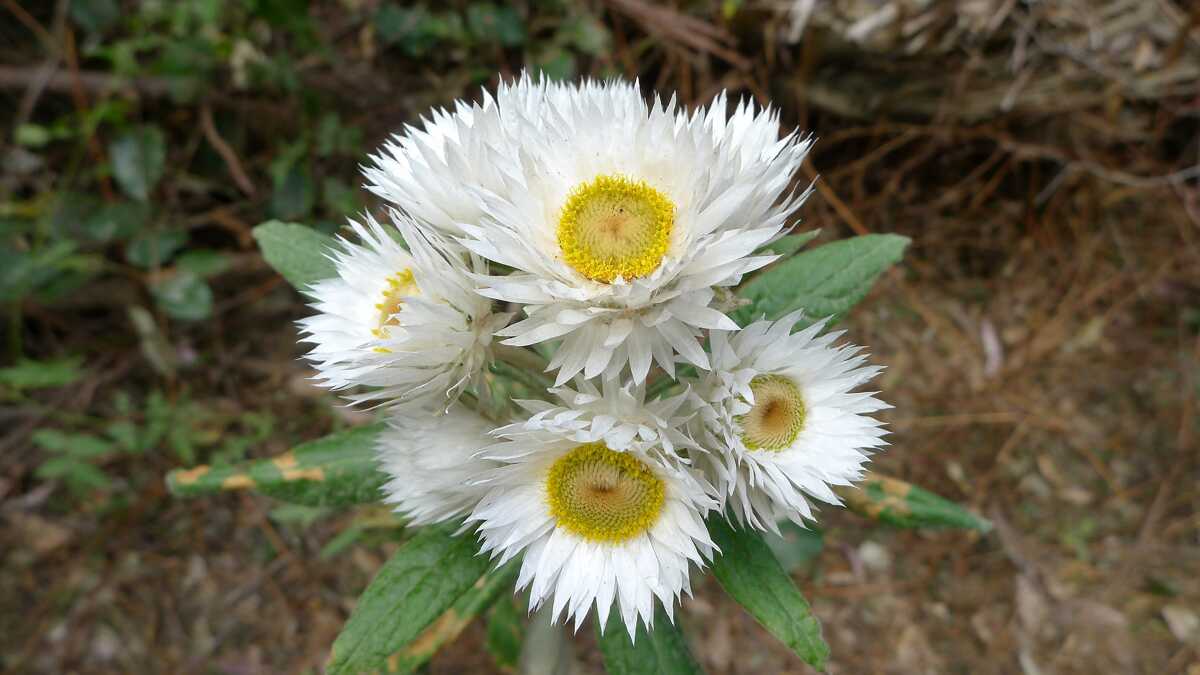
(Solanum ...xyz) Bush tomatoes were used as food by Aboriginal people for many years, but some of them contain decent amounts of solanine which is highly poisonous so refrain from consuming them if you're not sure of the species. Learn more at https://en.wikipedia.org/wiki/Solanum
Photo by Mark Marathon (CC BY-SA 3.0)
